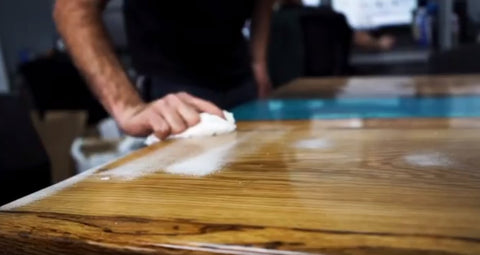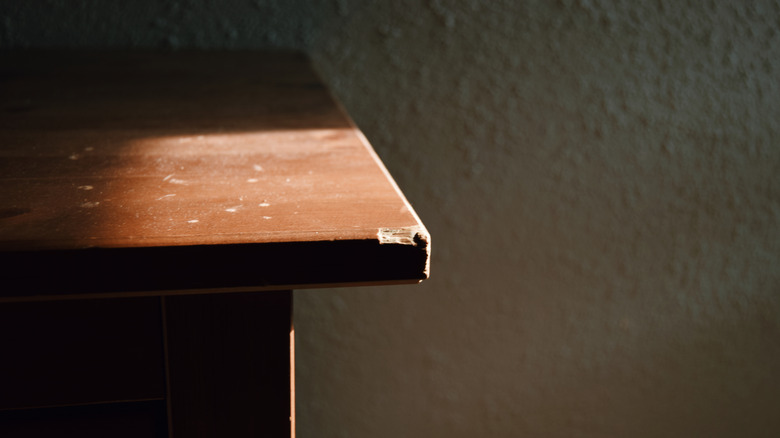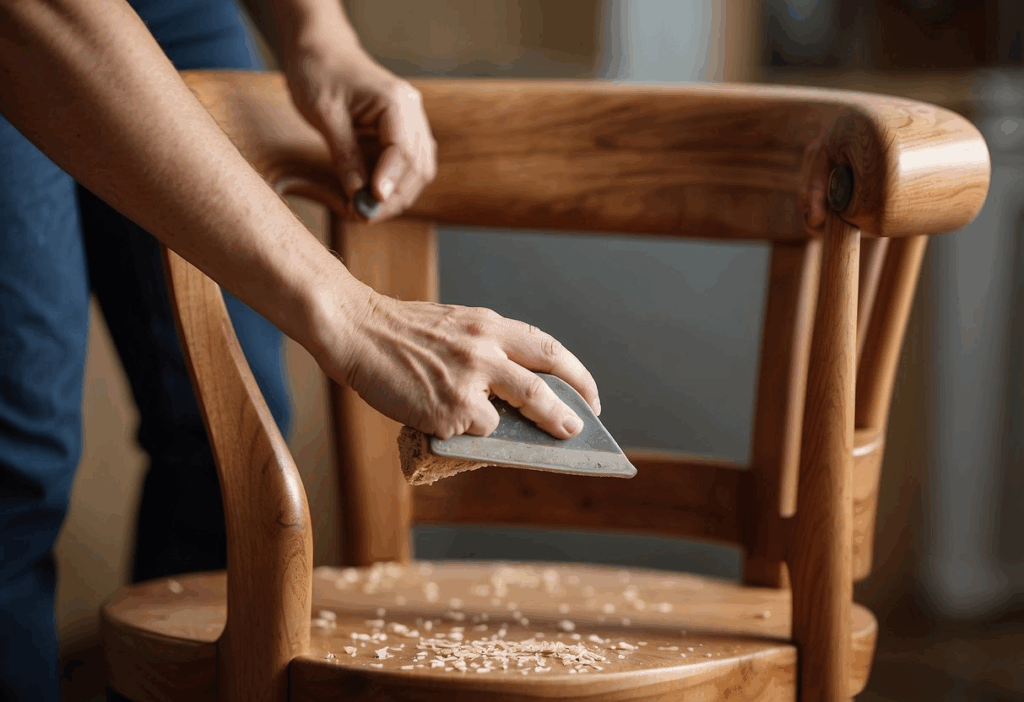Epoxy resin furniture is beautiful, shiny, and can mix natural wood with shiny finishes. People know that tables, countertops, and other things created with epoxy last a long time, but that doesn’t imply they can’t be broken. It’s not unusual for little scratches or chips to show up over time if you use it a lot, especially in busy settings.
A lot of individuals want to know if these marks can be fixed. Yes, in most circumstances you don’t need to buy new furniture or put up with damaged surfaces. You can easily fix scratches and even chips at home or with the help of a specialist. This is especially true for things like a wood table with epoxy, where the mix of natural material and resin makes any flaws stand out more.
What Usually Causes Damage?
Everyday activities are often enough to leave a mark. Scratches can happen if you drag keys or heavy things across the surface, put hot cookware directly on the resin, or use aggressive cleaners. Chips commonly occur when anything hits the edge or corner of a piece of furniture.
Over time, sunlight can also hurt things. If you leave some kinds of epoxy in direct sunlight for too long, they may become yellow or lose their luster.
Is All Damage Repairable?
Most small scratches can be fixed. You might be able to buff it out if the damage isn’t too deep. Deeper scratches take more work but are still repairable. Chips, where a small part of the resin has broken off, also can be filled and polished. The only time it becomes harder to repair is if the damage is deep into the wood or if large sections are cracked or missing.
Fixing Light Scratches

Most of the time, it’s easy to deal with small scratches on the surface. A little sanding and polishing is often all it takes to get the shine back. Use a soft cloth and mild soap to clean the surface first. Let it dry completely.
Then, use very fine sandpaper, like 1000 grit, and sand the area in little circles. If you keep the surface a little damp while you sand it, you won’t scrape it as much. After the scratch is gone, use a polishing cream or rubbing compound to make the surface shine again. This process works well for hairline marks and dull spots that develop over time from regular use.
Repairing Deeper Scratches
When a scratch is more visible or you can feel it with your fingernail, sanding alone may not be enough. You might need to apply a thin layer of clear epoxy over the damaged spot. Start by sanding the area gently to smooth out rough edges. Clean off any dust. Then mix a small amount of clear epoxy and spread it carefully over the scratch.
Some people use a small brush or a piece of plastic to help spread the resin evenly. Once the epoxy has cured — which could take several hours — lightly sand and polish the area to make it blend in with the rest of the surface.
What to Do If You Have Chips or Missing Resin

Chips can be more noticeable and may look like a piece has broken off the edge. These are common on corners or spots that get bumped often. To repair a chip, you’ll need fresh resin. Start by taping around the chipped area so the new epoxy doesn’t spread beyond it.
Mix up a little amount of resin and carefully fill in the hole. You might use a toothpick or small tool to help shape it. Let it cure fully — follow the instructions on the epoxy packaging for timing. Once it’s solid, sand it gently until it matches the rest of the surface, and finish with polishing to restore the shine. If the original epoxy was colored or had special effects, it can be tricky to match the look exactly. In those cases, a professional touch may be needed.
When to Ask for Help
You can fix most small problems at home, but some situations are better handled by someone with experience. For example, if the damage covers a large area, the color is complex, or the furniture has sentimental or artistic value, you might not want to risk making it worse. Professionals can refinish, color match, and reseal the surface to make it look like new again.
Preventing Future Damage
You undoubtedly want to keep your epoxy furniture looking nice once you fix it. Using soft coasters or placemats under heavy or hot things can assist. Don’t cut right on the surface, and don’t drag items across it. Use delicate clothes to clean the furniture.
If your furniture is next to a window that gets a lot of sun, think about putting up curtains or shades to block some of the light. This can help keep things from turning yellow or fading over time.
How Long Do Repairs Last?
Repairs can last just as long as the original finish if they are done well. Once it cures, epoxy is quite robust. If you take care of the surface, a tiny patch or scratch repair can last for years. If a surface has a lot of scratches or the sheen has faded over time, individuals sometimes choose to refinish the whole thing. This means sanding down the top layer and putting on a new coat of resin. It takes more work, but it gives the piece a new beginning.
Bringing Your Epoxy Piece Back to Life
It’s annoying when your epoxy furniture gets scratches and chips, especially if you bought it for its beauty and unusual look. The good news is that most of these problems can be rectified, sometimes easily and without having to buy anything new.
You can make your epoxy furniture last longer and keep it looking as good as the day you took it home if you take care of it and use the appropriate methods. Knowing that repairs are possible provides you peace of mind, whether you’re just doing a small touch-up or thinking about a full resurfacing. If you’re interested in how these pieces are made or want to learn more about their craftsmanship, visit ThunderWood Studio.

